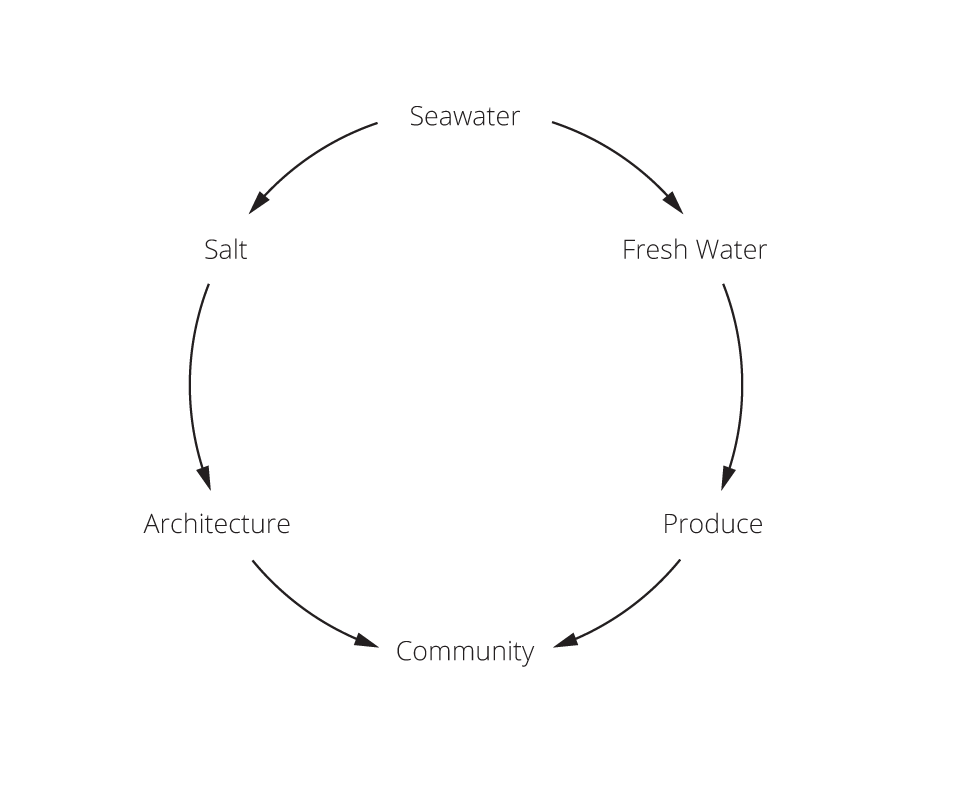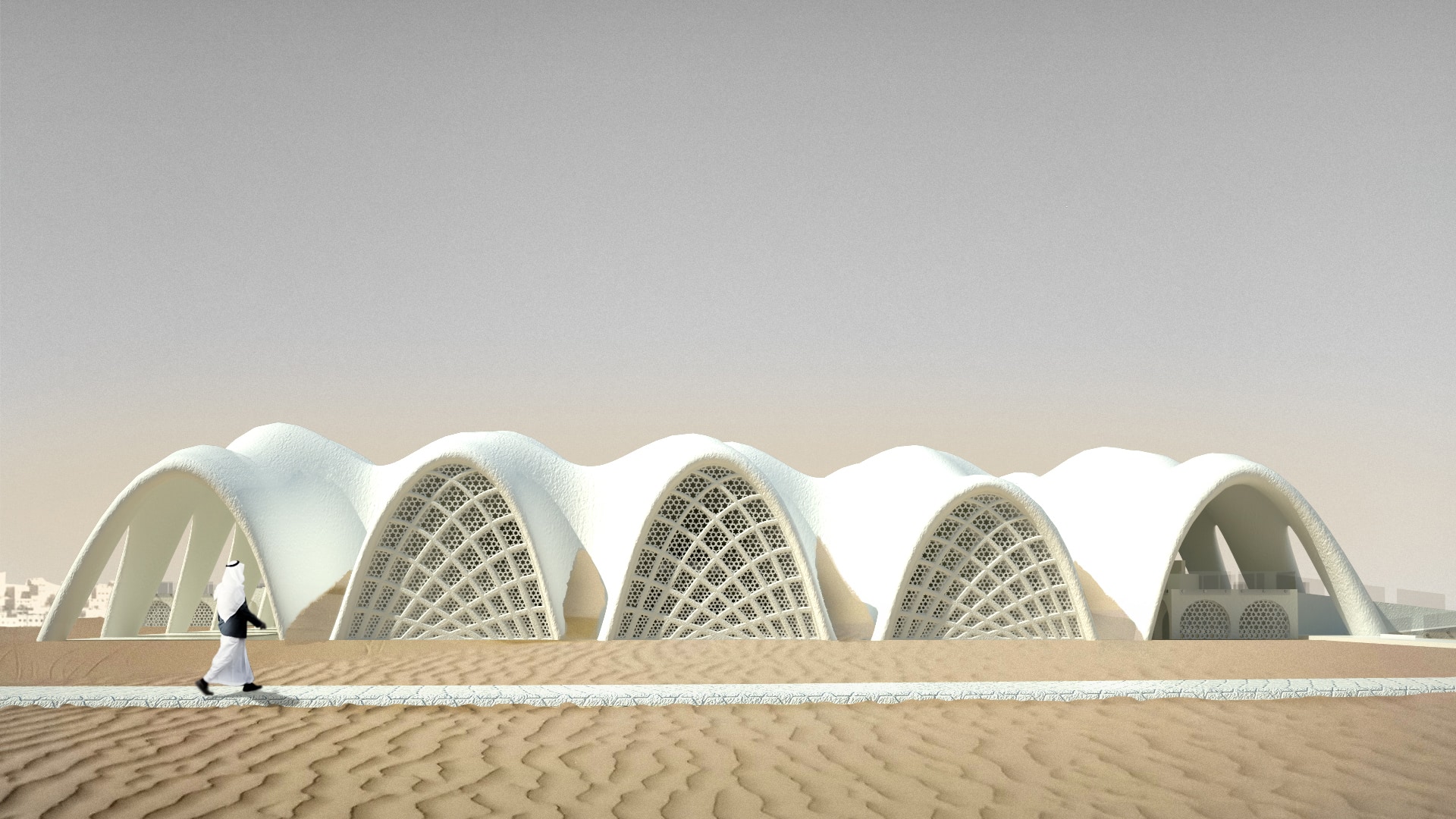Erosion and desertification are two of the biggest changes we are facing today. According to the United Nations they are "the greatest threat to our planet". Intensive agriculture and urbanization are among the causes of this emergency state of climate shift. This causes yearly losses of 12 million hectares of land, right when our population is highly increasing. Given this actual status, Dutch innovator Eric Geboers came up with a solution to use only locally available resources. His idea is to pump seawater to establish a well-functioning, independent ecosystem in desertified areas.
It is called The Salt Project and it is based on renewable resources. The first step is pumping seawater to arid areas, then the sun will work his magic and distill fresh water in greenhouses. The resulting salt will become the basic building material to construct structures, in order to close the circle of this zero-waste ecosystem.

Through innovation, 3-D printing, biomimicry and architecture the team can build a whole set of infrastructures that are key elements of this ecosystem. Among their projects you can find a Salt Factory, where salt building material is created and transported to be brought to construction sites. The design of the structures consists of a generated shell form made out of 3D printed panels, it is well integrated into the landscape and is also nominated for the Archiprix by the TU Delft.
Source and Images: The Salt Project

Share your thoughts and join the technology debate!
Be the first to comment